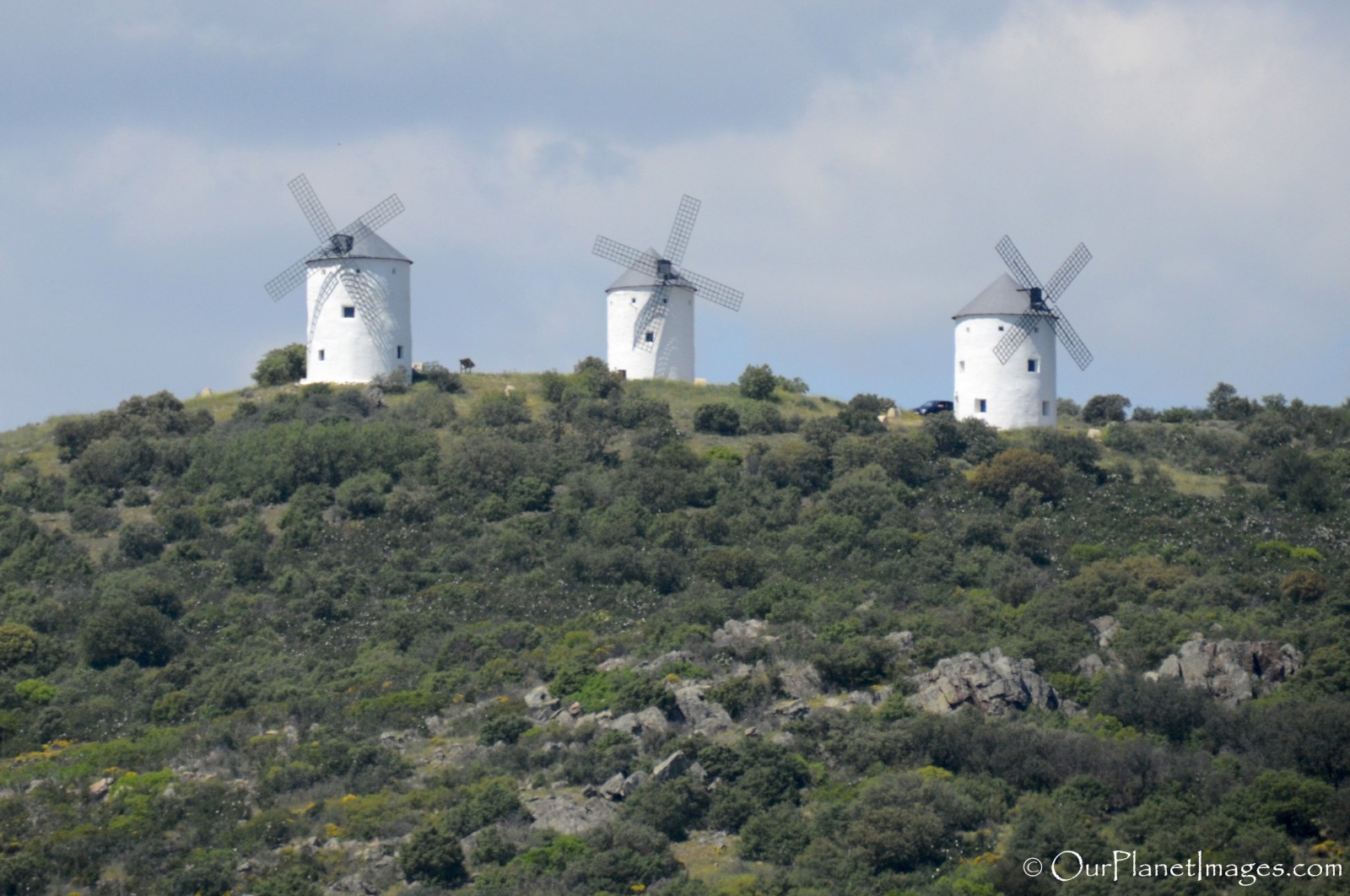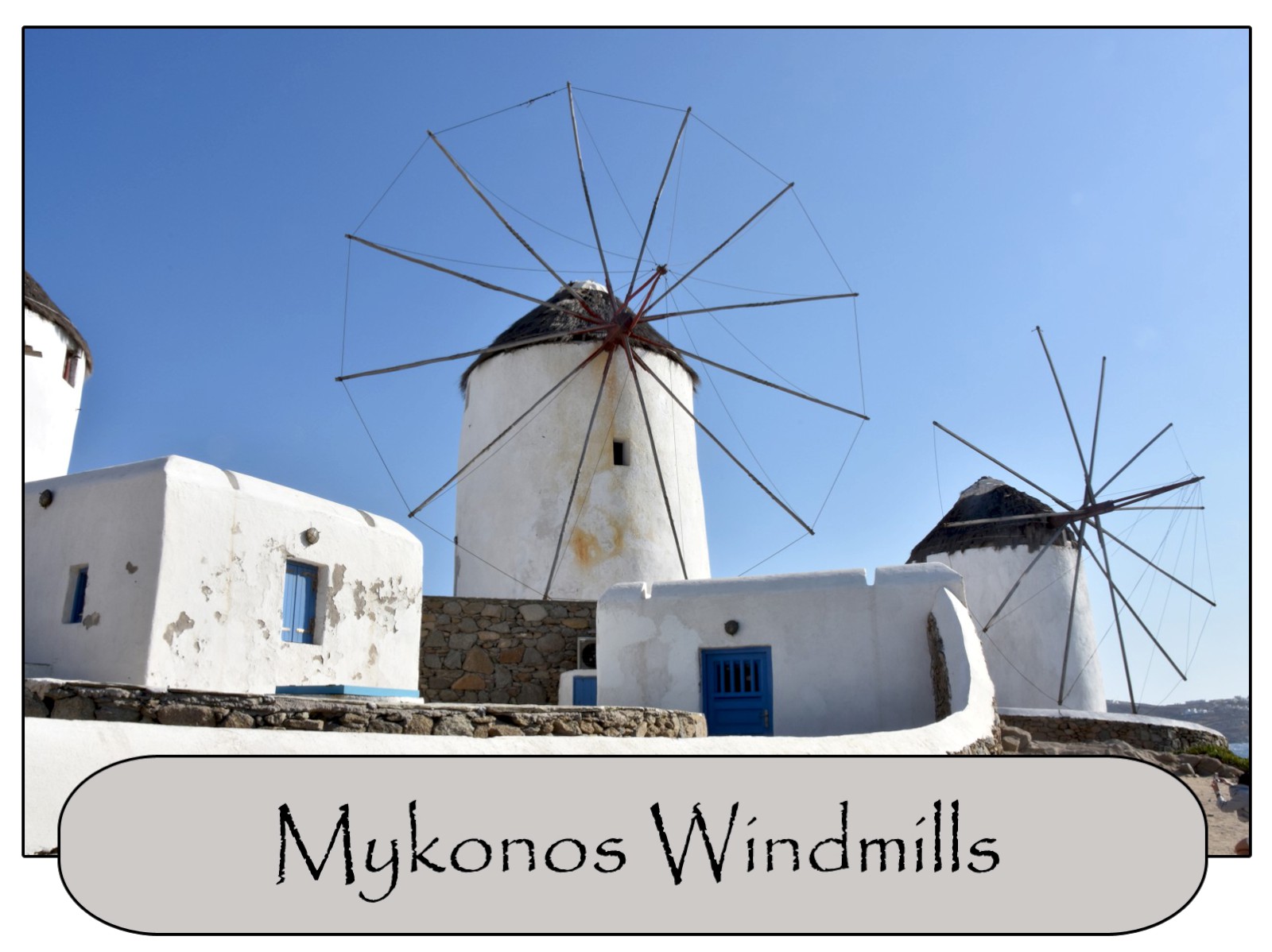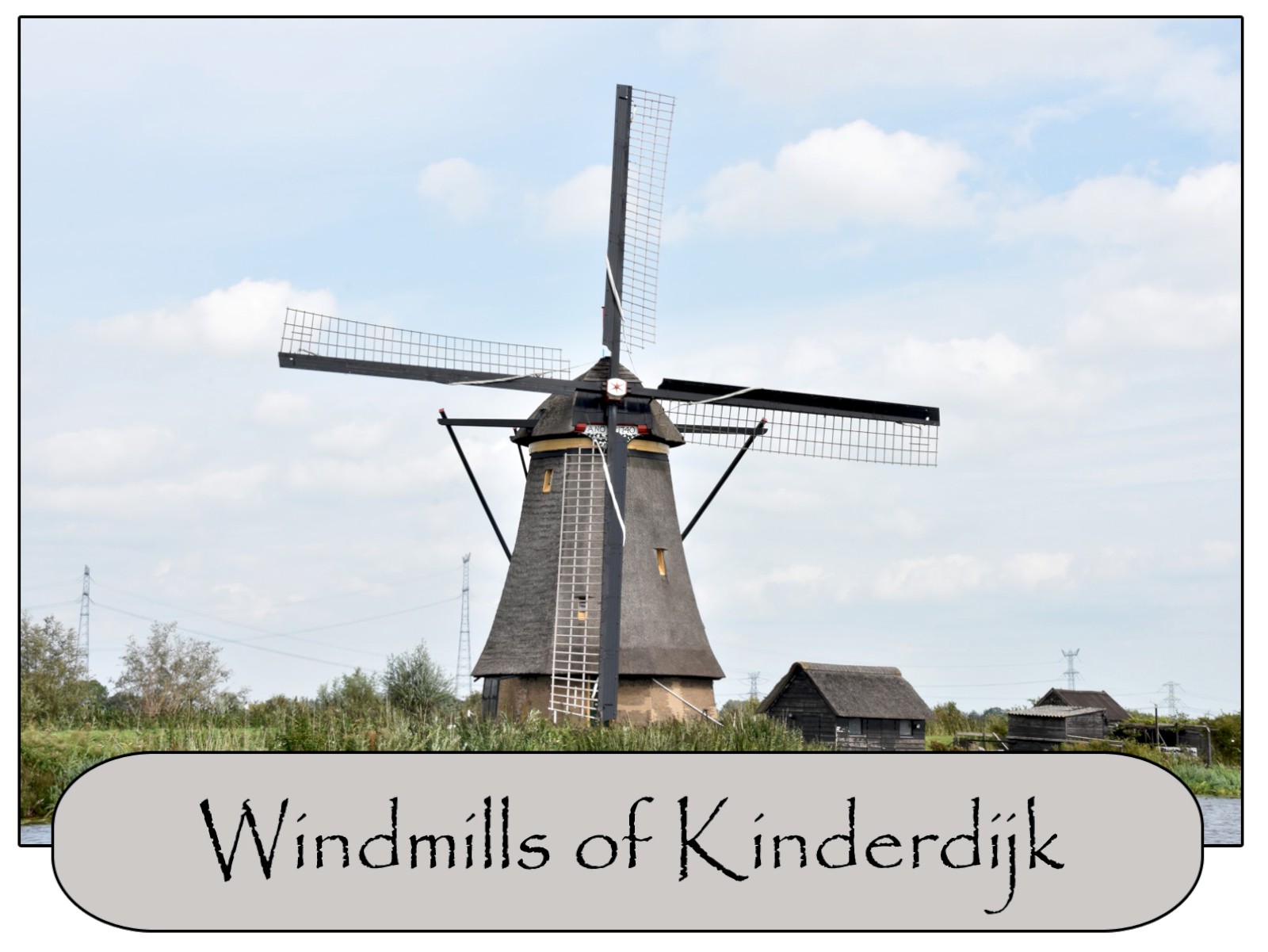Don Quixote is an epic Spanish novel by Miguel de Cervantes published in 1605. The novel is about a chivalrous madman named Don Quixote and his simple peasant sidekick Sancho Panza from the region of La Mancha in central Spain. Obsessed with the chivalrous ideals from knights doing valiant quests in the books that he has read, he decides to go on his own adventures to defend the helpless and destroy the wicked.
On their first adventure, Don Quixote mistakes a field of windmills for evil giants and attempts to fight them. From horseback he drives his lance into the revolving sail of the first windmill and is thrown from his horse and lands on the ground. When he rises up and see the windmills, he concludes that a magician must have turned the giants into windmills.
The adventures of Don Quixote and his sidekick Sancho are fictional but the windmills of La Macha are real. The actual Don Quixote Windmills that inspired this influential piece of literature are still standing and they are located in the La Mancha region of Spain.
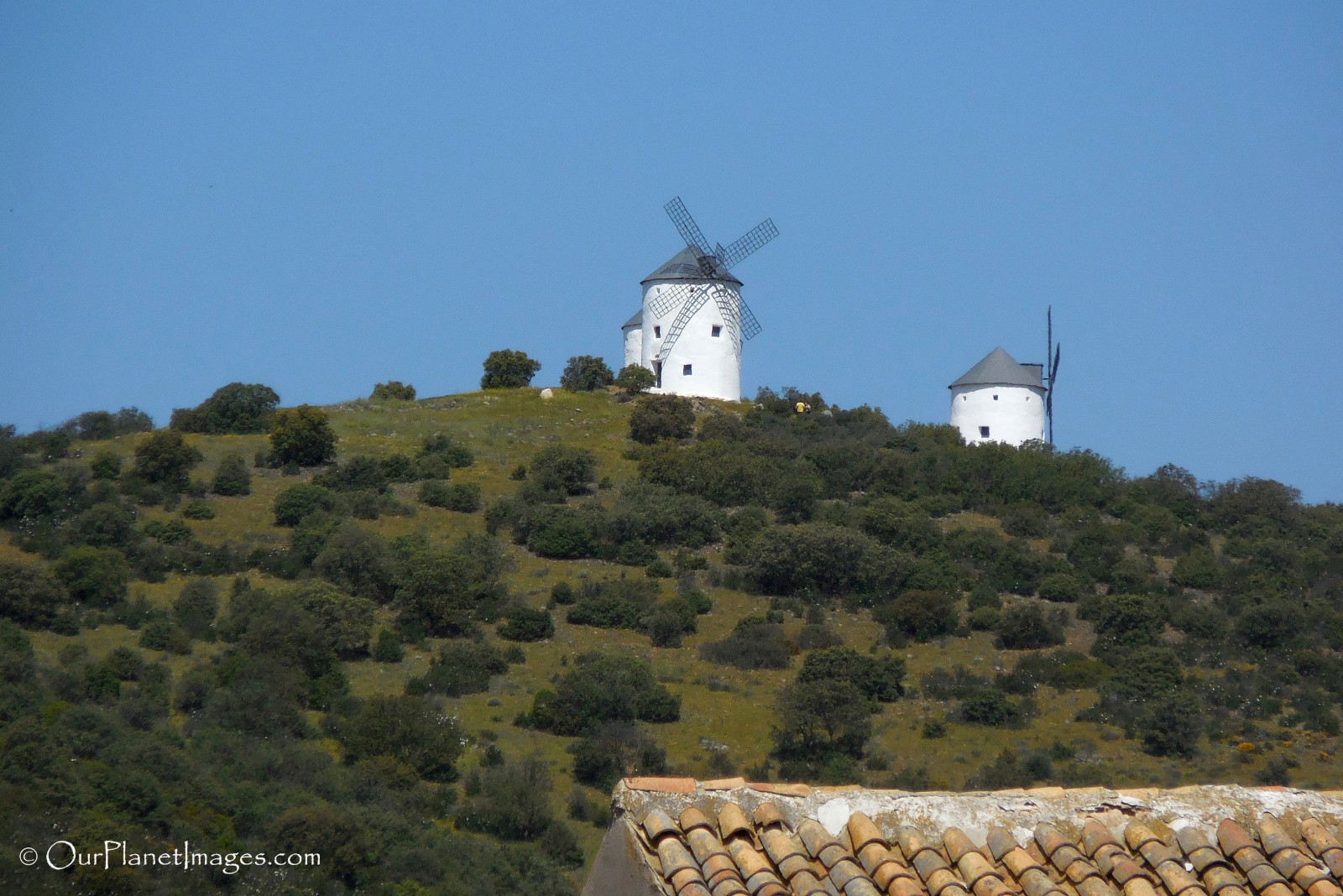
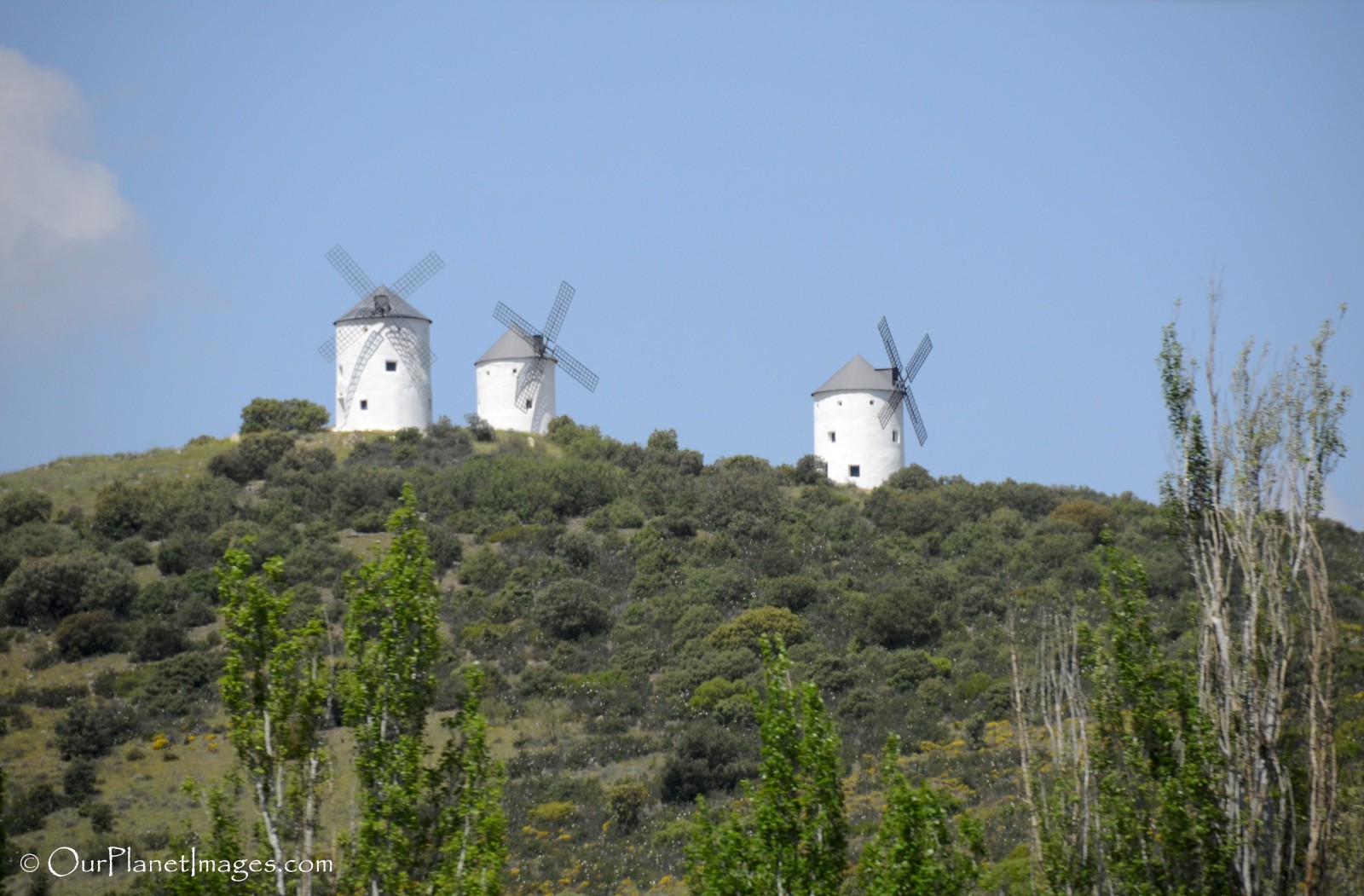
Traveling through the La Mancha region, there are lots of white windmill scattered on the hill tops. They all look very similar, they all have whitewashed circular bases with lookout windows in all directions and they have conical tops with four giant blades (sails). On the top floor of the windmill there are 16 square windows used for determining which direction the wind is blowing in order to determine which way to orient the wind catching sails.
The blades turn with the wind moving two giant cone-shaped stones that crushes dried wheat turning it into flour. Some of the windmills are still functioning and they can still be visited.
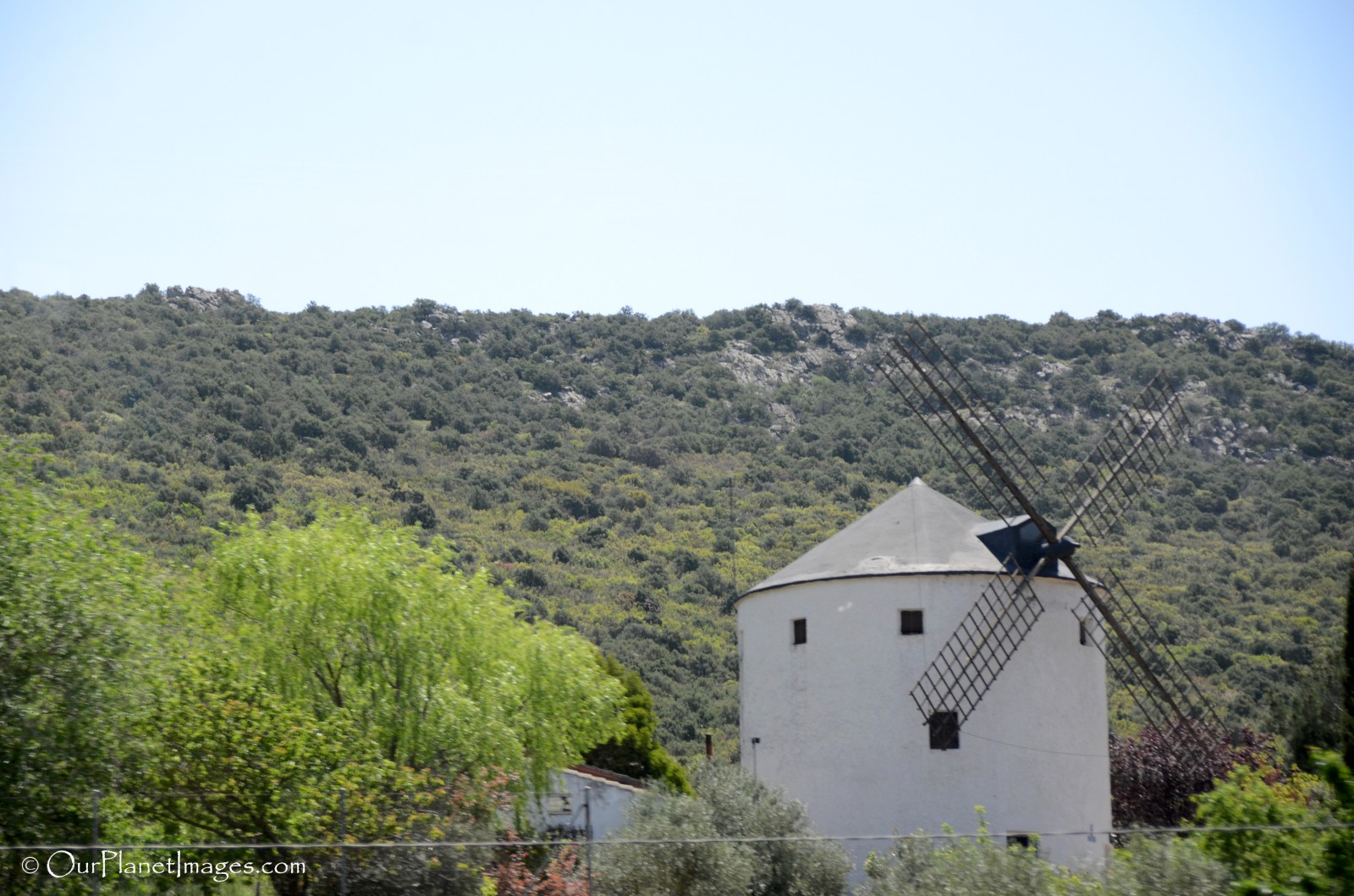
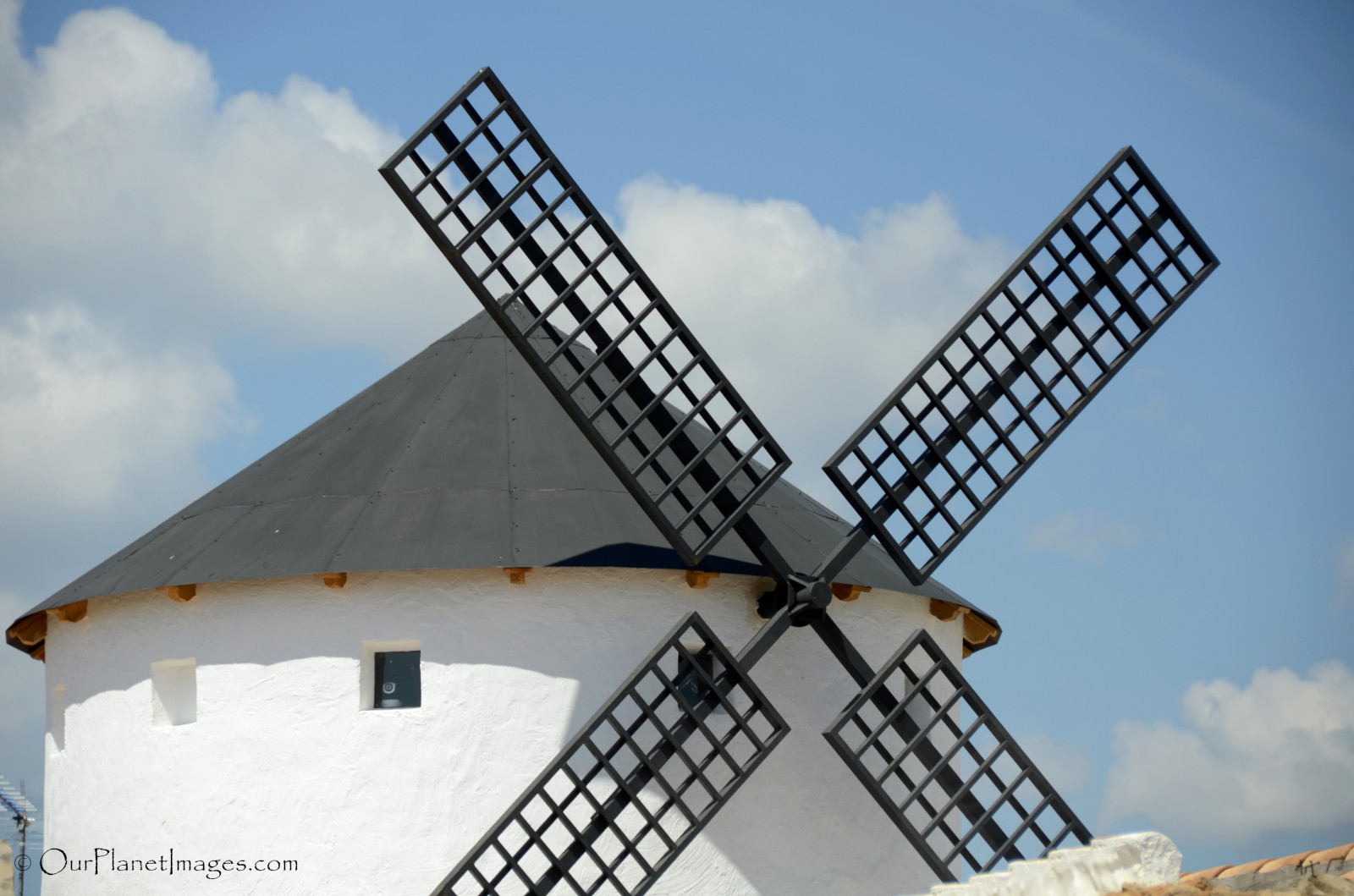
The Castilla-La Mancha is a region in central Spain to the south and east of Madrid. It is one of Spain’s biggest regions. The best preserved windmills can be found in three different locations of this region of Spain: Consuegra, Campo de Criptana and Mota del Cuervo.
Consuegra windmills are the largest group of windmills in Spain and they are an easy daytrip from Madrid. Consuegra is about 90 miles south of Madrid and it takes about 1 hour and 30 minutes of mostly highway driving.
The Consuegra windmills are on top of a hill and with 12 windmills surrounding the 10th century Castillo de Consuegra. The combination of a historic castle being surrounded by historic windmills makes for a very nice setting.
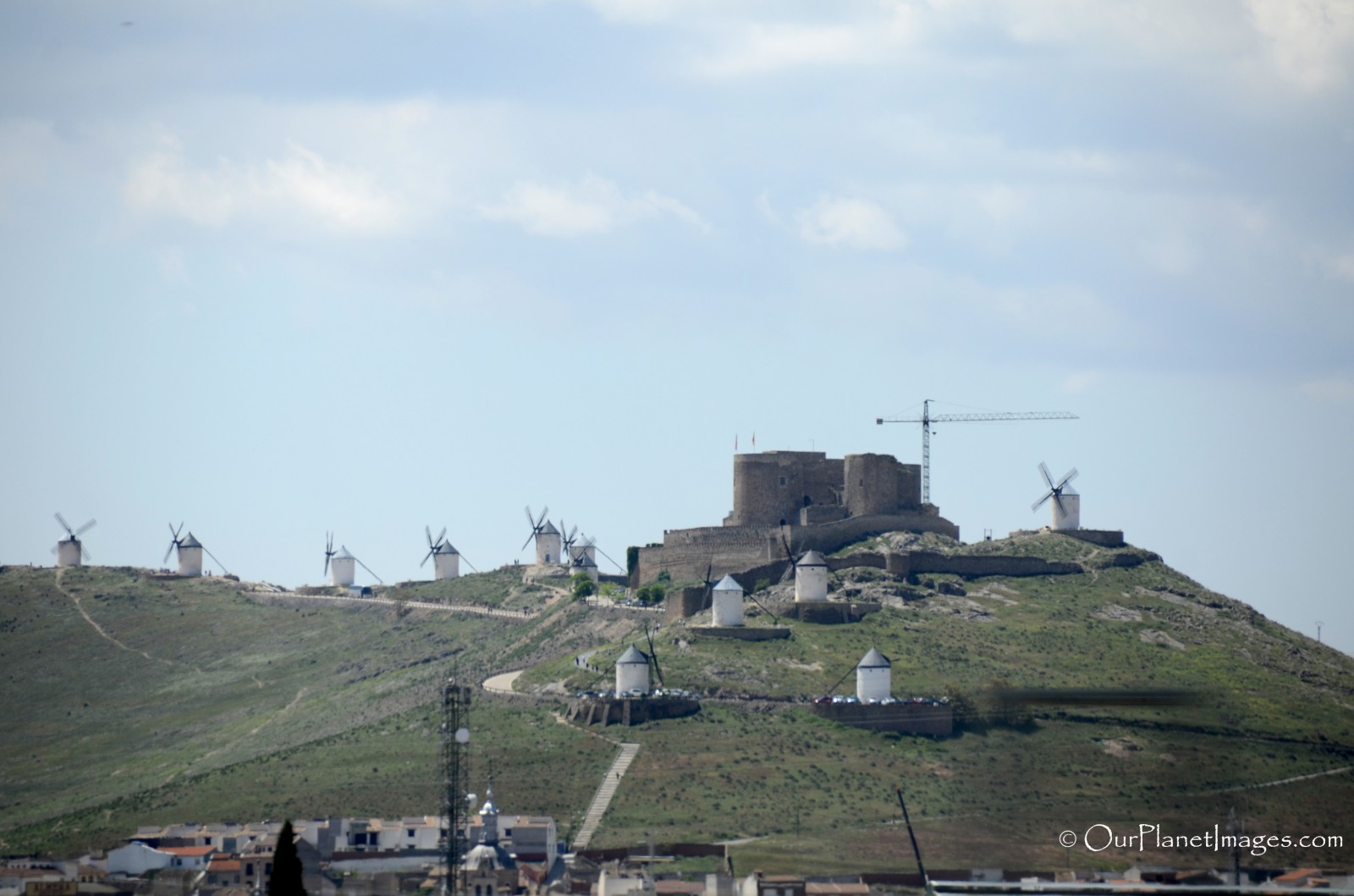
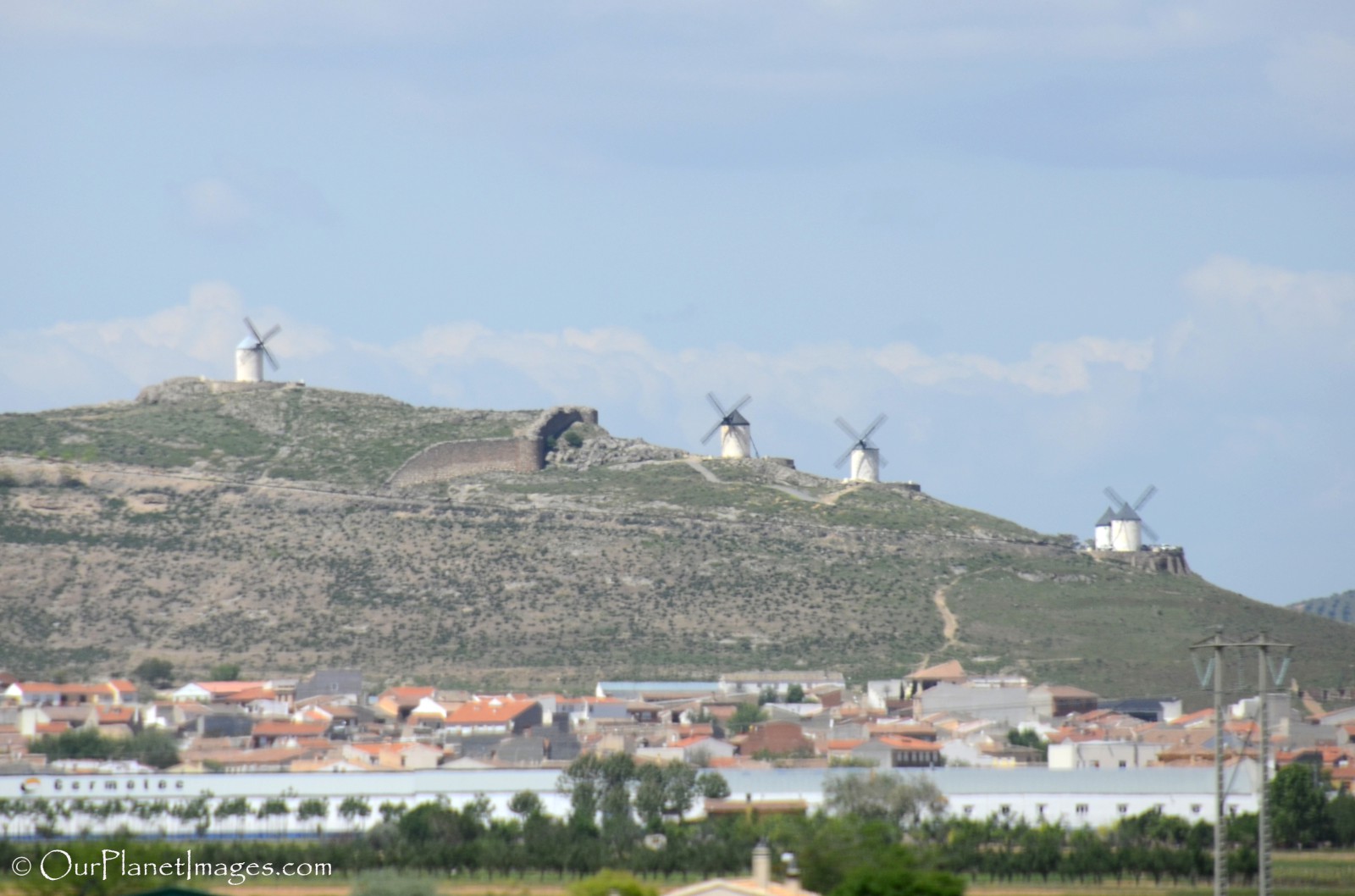
The Dust on My Shoes
Prior to my trip to Spain, I had knowledge of the Don Quixote stories and I enjoyed seeing the windmills that inspired one of the stories. Seeing all of the windmills also helps me to visualize the Don Quixote stories better. I also liked that all of the windmills are virtually alike because it made for a very attractive setting
Windmills have been around for a very long time and they have been used for several purposes. Similar to the Don Quixote Windmills, the windmills in Greece were used to grind grain. The windmills in the Netherlands were used to pump water out of marsh areas and reclaim land. In my home state of Texas, I grew up seeing windmills that were uses to pump water out of the ground into tanks to provide water for cattle. Modern windmill farms have taken an ancient technology to turn the power of wind into electrical power.
Living in our modern high technology world it is interesting to see technologies from the past being repurposed to provide for our needs today.
Just because it is simple doesn’t mean that it won’t work!
